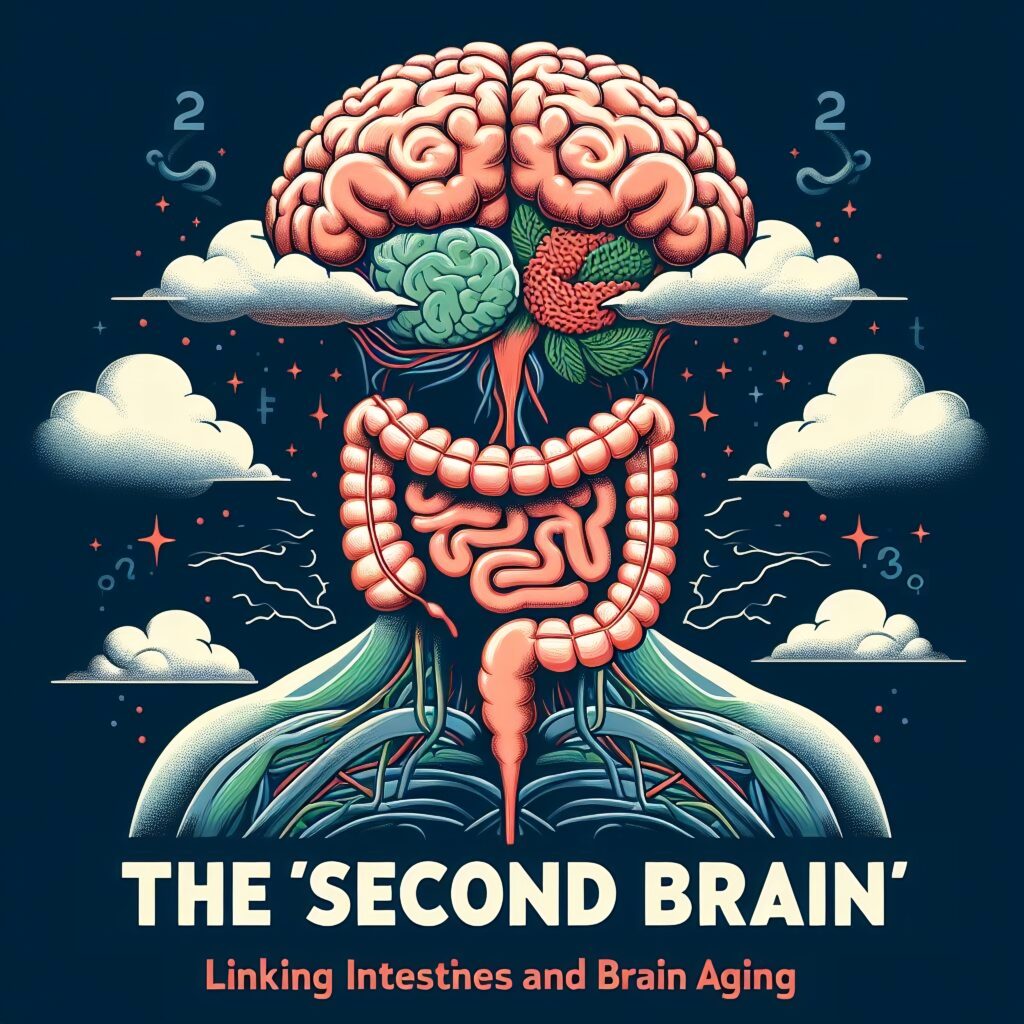Introduction
In this article, we will explore how we can deal with hypothyroidism using natural and non-invasive methods. While medications are essential, there are lesser-known approaches and scientific findings that can complement traditional treatment and provide significant assistance in managing this condition.
Understanding Hypothyroidism
Hypothyroidism is a condition in which the thyroid gland fails to produce an adequate amount of hormones, resulting in a slowed metabolism. The primary cause of hypothyroidism is Hashimoto’s disease, an autoimmune inflammation of the thyroid gland. Medications such as levothyroxine, which contain hormones that supplement the thyroid’s deficiencies, are commonly prescribed. However, there are additional methods we can employ to combat this condition.
Hashimoto’s thyroiditis, also known as Hashimoto’s disease, is an autoimmune disorder and the most common cause of hypothyroidism. In this condition, the immune system mistakenly attacks the thyroid gland, leading to inflammation and damage over time. This chronic inflammation hinders the thyroid’s ability to produce adequate levels of thyroid hormones, resulting in hypothyroidism.
Hashimoto’s thyroiditis predominantly affects women, and its exact cause is still not fully understood. However, a combination of genetic predisposition and environmental factors is believed to play a role in its development. Some potential triggers include exposure to certain viruses, hormonal imbalances, chronic stress, and excessive iodine intake.

The Role of Selenium
Selenium plays a critical role in supporting the function of an underactive thyroid. This mineral is essential for the production of active thyroid hormones and helps protect the thyroid gland from oxidative damage caused by free radicals.
The thyroid gland contains the highest concentration of selenium compared to other organs in the body. Selenium is incorporated into selenoproteins, which are enzymes that are involved in various processes within the body, including thyroid hormone metabolism. These selenoproteins help convert the inactive thyroid hormone (T4) into the active form (T3), which is crucial for maintaining proper thyroid function and regulating metabolism.
In addition to its role in hormone production, selenium’s antioxidant properties are particularly beneficial for individuals with Hashimoto’s thyroiditis. The autoimmune inflammation in this condition leads to the generation of free radicals, which can damage the thyroid gland. Selenoproteins help counteract these harmful effects by neutralizing free radicals and reducing oxidative stress in the thyroid.
Fortunately, selenium can be easily obtained through dietary sources. One of the richest sources of selenium is Brazil nuts. Just one large Brazil nut can provide more than the recommended daily intake of selenium, making it an excellent addition to the diet. However, it’s important to note that selenium content in foods can vary depending on the soil composition in different regions, so the selenium content in Brazil nuts can also vary. Other dietary sources of selenium include seafood, poultry, eggs, and grains, albeit in smaller amounts.
For individuals with diagnosed selenium deficiencies or those who require higher selenium intake due to their condition, selenium supplementation may be recommended. The recommended daily intake of selenium for optimal thyroid function is approximately 55 micrograms for adults. However, in cases of deficiency or as advised by a healthcare professional, the dosage may be increased to at least 100 micrograms until the deficiency is addressed.
Studies have shown that selenium supplementation can have tangible effects in individuals with Hashimoto’s thyroiditis. It has been observed to reduce the levels of antithyroid peroxidase antibodies, which are markers of autoimmune activity against the thyroid gland. Lowering these antibodies can help minimize the autoimmune attack on the thyroid and potentially slow down the progression of the disease. Additionally, selenium supplementation has also been associated with a decrease in C-reactive protein (CRP), a marker of inflammation in the body.
However, it’s essential to approach selenium supplementation with caution. Taking excessive amounts of selenium can be harmful and lead to toxicity. Therefore, it’s advisable to consult with a healthcare professional before starting any selenium supplementation to determine the appropriate dosage for your specific needs.
Managing Goitrogens
For individuals with hypothyroidism, it is important to be mindful of consuming goitrogenic substances that can interfere with iodine absorption and subsequently impact thyroid hormone production. However, it is crucial to note that goitrogens primarily affect iodine absorption rather than completely blocking it. This means that for a healthy individual, the impact of goitrogens is minimal. Nevertheless, for individuals with hypothyroidism who are taking levothyroxine, the impact of goitrogens can be more significant.
Goitrogens are substances that can be found in certain foods and can potentially disrupt thyroid function. They are primarily found in cruciferous vegetables such as cabbage, broccoli, cauliflower, turnips, rocket, radishes, mustard greens, kale, and kohlrabi. These vegetables are highly nutritious and offer numerous health benefits, so it is generally not necessary to avoid them completely. However, individuals with hypothyroidism may want to be cautious and consider moderating their intake or adjusting their preparation methods to reduce the goitrogenic effects.
One effective strategy to reduce goitrogen levels in cruciferous vegetables is to cook them without a lid. Cooking cruciferous vegetables without a lid can help reduce their goitrogen content by approximately 30% to 50% based on scientific data. This cooking method helps in breaking down the goitrogenic compounds and minimizing their potential impact on iodine absorption. Steaming, sautéing, or stir-frying these vegetables are also good alternatives as they can help reduce the goitrogenic compounds.
Additionally, compensating for any potential reduction in iodine absorption can be achieved by incorporating iodine-rich foods into the diet. Seafood, especially white fish like cod and haddock, is an excellent source of iodine. Seaweed, such as kelp or nori, is another rich source of iodine. Including these foods in the diet can help ensure an adequate supply of iodine, which is essential for proper thyroid function.
It’s important to note that while goitrogens may have some impact on iodine absorption, their effects are typically minimal when consumed in reasonable amounts. The goitrogenic properties of these foods are significantly reduced through cooking, and the potential negative impact on thyroid function is generally outweighed by their overall nutritional benefits. Therefore, most individuals with hypothyroidism can continue to enjoy cruciferous vegetables as part of a balanced diet.
Dietary Considerations
When managing hypothyroidism, it is important for individuals to pay attention to their diet and make certain considerations that can positively impact their thyroid function. Two important dietary considerations for individuals with hypothyroidism are avoiding processed foods high in trans fats and being mindful of alcohol consumption.
Processed foods, particularly those containing high amounts of trans fats, should be avoided by individuals with hypothyroidism. Trans fats have been strongly correlated with worsening thyroid function, as indicated by recent studies. These unhealthy fats can interfere with the body’s ability to produce and utilize thyroid hormones effectively. Foods that commonly contain trans fats include cookies, biscuits, crackers, fried foods, doughnuts, and margarine. These processed foods are often high in calories, low in nutrients, and can contribute to weight gain, which is already a common concern for individuals with hypothyroidism. Opting for whole, unprocessed foods and healthy fats, such as avocados, nuts, seeds, and olive oil, can be beneficial for overall health and support optimal thyroid function.
Another important consideration is the combination of hypothyroidism and alcohol. Alcohol consumption should be moderated, as it can have detrimental effects on overall health and directly impact thyroid function. Alcohol inhibits the production of thyroid-stimulating hormone (TSH), which is responsible for signaling the thyroid gland to produce thyroid hormones. When TSH production is inhibited, it further exacerbates the symptoms associated with an underactive thyroid. Moreover, alcohol can interfere with the conversion of the inactive thyroid hormone (T4) to the active form (T3), which can affect thyroid hormone availability and utilization in the body. It is advisable for individuals with hypothyroidism to limit their alcohol intake or consider abstaining from alcohol altogether to support thyroid health and overall well-being.
In addition to avoiding processed foods high in trans fats and moderating alcohol consumption, individuals with hypothyroidism should strive for a balanced and nutritious diet. This includes incorporating a variety of whole foods such as fruits, vegetables, lean proteins, whole grains, and healthy fats. These foods provide essential nutrients, vitamins, and minerals that support overall health and thyroid function.
It is worth noting that dietary considerations for individuals with hypothyroidism may vary based on individual factors and specific recommendations from healthcare professionals. Consulting with a healthcare provider or a registered dietitian who specializes in thyroid health is highly recommended to receive personalized guidance on dietary choices and ensure an appropriate approach that suits individual needs and goals.
In summary, individuals with hypothyroidism should prioritize a diet that avoids processed foods high in trans fats, as these can worsen thyroid function. Alcohol consumption should also be moderated or limited, as it can directly inhibit thyroid-stimulating hormone production and impact thyroid hormone conversion. Emphasizing a balanced and nutritious diet, rich in whole foods, can support overall health and optimize thyroid function. Consulting with healthcare professionals can provide personalized guidance and recommendations for dietary choices specific to an individual’s hypothyroidism condition.
Addressing Insulin Resistance
Insulin resistance is a condition in which the body’s cells become less responsive to the effects of insulin, resulting in elevated blood sugar levels. This condition not only impacts overall health but also plays a significant role in thyroid function, particularly in individuals with hypothyroidism. Insulin resistance and hypothyroidism can interact in a bidirectional manner, each exacerbating the other. Therefore, addressing insulin resistance becomes crucial for managing both conditions effectively.
One of the key approaches to addressing insulin resistance is weight loss. Excess weight, particularly abdominal fat, is closely associated with insulin resistance. Fat cells, especially those in the abdomen, release certain chemicals and hormones that interfere with insulin’s ability to regulate blood sugar levels effectively. In individuals with hypothyroidism, weight gain is a common symptom due to the slowed metabolism associated with the condition. This weight gain can further contribute to insulin resistance.
Weight loss, achieved through a combination of a healthy diet and regular physical activity, plays a vital role in reducing fat accumulation in the liver and pancreas, thereby improving insulin sensitivity. When insulin sensitivity improves, the body’s cells can more effectively respond to insulin and utilize blood sugar for energy. This, in turn, helps restore proper thyroid function. It is important to note that weight loss should be approached in a gradual and sustainable manner, as rapid weight loss can have negative impacts on thyroid function.
Regular physical activity is another key component in addressing insulin resistance and improving thyroid function. Exercise helps increase insulin sensitivity, allowing cells to better respond to insulin and facilitate the uptake of glucose from the bloodstream. Additionally, physical activity supports weight loss efforts and helps maintain a healthy body weight. Engaging in a combination of cardiovascular exercises, strength training, and flexibility exercises can be beneficial for overall health, insulin sensitivity, and thyroid function.
The relationship between insulin resistance and hypothyroidism is mutually influential. By addressing insulin resistance through weight loss and regular physical activity, individuals can improve their overall health and restore proper thyroid function. It is important to note that managing insulin resistance should be done under the guidance of healthcare professionals, as individualized approaches may be necessary based on specific health conditions and considerations.

Maintaining a Healthy Gut
The gut microbiome, the complex ecosystem of microorganisms residing in our digestive system, plays a crucial role in our overall health, including thyroid function. The gut microbiome influences various physiological processes, such as immune system regulation, nutrient absorption, and hormone balance. Scientific research has highlighted the strong connection between gut health and thyroid function, underscoring the importance of maintaining a healthy gut for optimal thyroid health.
One key aspect of supporting a healthy gut is consuming a diet that is rich in fiber, prebiotics, and probiotics. Fiber, found abundantly in fruits, vegetables, whole grains, and legumes, is essential for promoting the growth and diversity of beneficial gut bacteria. It acts as a substrate for these bacteria, allowing them to thrive and carry out their vital functions. By consuming an adequate amount of fiber, individuals can help maintain a balanced gut microbiome, which positively impacts thyroid function.
In addition to fiber, incorporating prebiotic-rich foods into the diet is important for nurturing a healthy gut. Prebiotics are non-digestible fibers that serve as fuel for beneficial gut bacteria. They promote the growth and activity of these bacteria, contributing to a more diverse and resilient gut microbiome. Foods such as garlic, onions, asparagus, bananas, and artichokes are excellent sources of prebiotics and should be included in a well-rounded diet.
Furthermore, probiotics are live bacteria that confer health benefits when consumed. They can be obtained from fermented foods like yogurt, kefir, sauerkraut, kimchi, and other cultured products. Probiotics help replenish and maintain a healthy balance of beneficial bacteria in the gut. By introducing these live bacteria into the digestive system, probiotics can enhance gut health and support optimal thyroid function.
By focusing on a diet rich in fiber, prebiotics, and probiotics, individuals can support a diverse and balanced gut microbiome, which in turn positively influences thyroid function. A healthy gut microbiome helps regulate immune responses, reduces inflammation, and promotes efficient nutrient absorption, all of which are essential for maintaining thyroid health.
In addition to dietary measures, other lifestyle factors can also impact gut health. These include managing stress levels, getting adequate sleep, staying hydrated, and avoiding excessive use of antibiotics, which can disrupt the balance of gut bacteria. Engaging in regular physical activity and incorporating stress-reducing practices such as meditation or yoga can also contribute to a healthier gut.
It is worth noting that maintaining a healthy gut is a long-term commitment and individualized approaches may vary. Consulting with healthcare professionals or registered dietitians can provide personalized guidance and recommendations based on specific health conditions and needs.
Stress Management
Chronic stress can have detrimental effects on thyroid health. The body’s stress response involves the release of stress hormones, such as cortisol, which can interfere with the production and conversion of thyroid hormones. Prolonged or excessive stress can disrupt the delicate balance of thyroid hormones and contribute to imbalances, exacerbating the symptoms of hypothyroidism.
To maintain optimal thyroid function, it is crucial to adopt effective stress management techniques. By managing stress levels, individuals can support the health of their thyroid gland and minimize the impact of stress on their overall well-being. Here are some strategies that can help manage stress effectively:
Regular Exercise
Engaging in regular physical activity has numerous benefits for both physical and mental health. Exercise can help reduce stress levels, improve mood, and promote overall well-being. It stimulates the release of endorphins, which are natural mood elevators. Incorporating activities such as walking, jogging, cycling, or any other form of exercise that you enjoy into your routine can significantly contribute to stress reduction and support thyroid health.
Deep Breathing Exercises
Deep breathing exercises, such as diaphragmatic breathing or belly breathing, can activate the body’s relaxation response and counteract the physiological effects of stress. These techniques involve taking slow, deep breaths, focusing on the sensation of the breath filling your abdomen, and exhaling slowly. Deep breathing exercises can be practiced anywhere, anytime, and are particularly helpful during moments of stress or anxiety.
Meditation and Mindfulness
Meditation is a practice that involves focusing attention and achieving a state of mental clarity and relaxation. It can help reduce stress, promote emotional well-being, and improve overall resilience. Mindfulness, a form of meditation, involves being fully present in the moment, paying attention to thoughts, feelings, and bodily sensations without judgment. Incorporating meditation and mindfulness into your daily routine can be beneficial for managing stress and supporting thyroid health.
Yoga
Yoga combines physical postures, breathing exercises, and meditation to promote relaxation, balance, and flexibility. It has been shown to reduce stress, improve mood, and support overall well-being. Practicing yoga regularly can help alleviate stress-related symptoms and contribute to better thyroid function.
Relaxation Techniques
Engaging in activities that promote relaxation and well-being can be an effective way to manage stress. This may include listening to soothing music, taking warm baths, practicing aromatherapy, or engaging in hobbies and activities that bring joy and relaxation. Find what works best for you and incorporate these activities into your routine to help reduce stress levels.
Healthy Lifestyle Choices
Maintaining a healthy lifestyle is important for managing stress and supporting thyroid health. This includes getting adequate sleep, eating a balanced diet rich in nutrients, avoiding excessive caffeine and alcohol, and maintaining a regular routine. These lifestyle choices can provide a solid foundation for overall well-being and resilience to stress.

Optimizing Sleep
Getting adequate and quality sleep is essential for overall health, well-being, and hormone regulation, including the proper functioning of the thyroid gland. Sleep deprivation or poor sleep quality can disrupt the delicate balance of hormones in the body, including thyroid hormones, leading to imbalances and potential health issues. Therefore, optimizing sleep is crucial for supporting thyroid health. Here are some key considerations for achieving restful and rejuvenating sleep:
Aim for 7-8 Hours of Sleep
Most adults require 7-8 hours of sleep per night to allow for proper restoration and rejuvenation. Establishing a consistent sleep schedule and ensuring you allocate enough time for sleep can help regulate your body’s internal clock and promote optimal thyroid function.
Create a Sleep-Friendly Environment
Set up your bedroom in a way that promotes relaxation and restful sleep. Ensure your sleep environment is dark, quiet, and cool. Consider using blackout curtains or an eye mask to block out any light, earplugs or a white noise machine to minimize noise disturbances, and a comfortable mattress and bedding to enhance comfort.
Establish a Regular Sleep Routine
Consistency is key when it comes to sleep. Try to go to bed and wake up at the same time each day, even on weekends. This helps regulate your body’s internal clock, making it easier to fall asleep and wake up naturally. Avoid large variations in your sleep schedule, as it can disrupt your circadian rhythm and impact thyroid function.
Create a Bedtime Routine
Develop a relaxing routine before bed to signal to your body that it’s time to wind down and prepare for sleep. This can include activities such as taking a warm bath, reading a book, practicing relaxation exercises like deep breathing or meditation, or listening to calming music. Avoid stimulating activities, such as using electronic devices or engaging in intense exercise, close to bedtime, as they can interfere with sleep.
Limit Exposure to Blue Light
Blue light emitted by electronic devices, such as smartphones, tablets, and computers, can interfere with your body’s natural sleep-wake cycle. Minimize exposure to these devices at least one hour before bed, or consider using blue light-blocking glasses or apps that reduce blue light emissions on your devices.
Manage Stress and Anxiety
Stress and anxiety can disrupt sleep patterns and impact thyroid health. Engaging in stress management techniques, such as deep breathing exercises, meditation, or journaling, can help calm the mind and prepare you for restful sleep.
Avoid Stimulants and Heavy Meals Before Bed
Caffeine, nicotine, and alcohol can interfere with sleep quality and should be avoided, especially close to bedtime. Additionally, consuming heavy meals or large amounts of fluids before bed can cause discomfort and disrupt sleep. Instead, opt for light, easily digestible snacks if needed.
Regular Physical Activity
Regular exercise can promote better sleep by reducing stress, increasing endorphin levels, and regulating sleep patterns. However, it’s important to avoid exercising too close to bedtime, as it can stimulate the body and make it more difficult to fall asleep. Aim to finish moderate to vigorous exercise at least a few hours before bed.

Environmental Toxins
Exposure to environmental toxins can have a negative impact on thyroid function. Certain chemicals and pollutants found in our environment can interfere with the normal functioning of the thyroid gland and disrupt hormone production. To minimize toxin exposure and support optimal thyroid health, it’s important to take steps to reduce your exposure to these harmful substances. Here are some key considerations:
- Use Natural and Non-Toxic Household Products: Many conventional household cleaning and personal care products contain chemicals that can be harmful to both human health and the environment. To reduce toxin exposure, consider using natural and non-toxic alternatives. Look for products that are labeled as environmentally friendly, organic, or free from harsh chemicals. You can also make your own cleaning products using simple and safe ingredients like vinegar, baking soda, and essential oils.
- Filter Your Drinking Water: Drinking water can be a source of various contaminants, including heavy metals, pesticides, and chemicals. To minimize exposure to these toxins, use a water filter that can remove impurities. Look for a water filter certified to reduce contaminants such as chlorine, lead, mercury, and volatile organic compounds (VOCs). Common types of water filters include activated carbon filters, reverse osmosis systems, and distillation units.
- Choose Organic and Locally Sourced Foods: Pesticides and other chemicals used in conventional farming practices can accumulate in the food we consume. To reduce exposure to these toxins, choose organic produce and locally sourced foods whenever possible. Organic foods are grown without the use of synthetic pesticides and fertilizers, reducing the potential for chemical contamination. Locally sourced foods often have shorter transportation distances, which can minimize exposure to preservatives and other chemicals used to extend shelf life.
- Be Mindful of Seafood Consumption: Some species of fish and seafood can contain high levels of mercury, which is a toxic heavy metal that can impair thyroid function. Pregnant women and individuals with thyroid disorders should be particularly cautious about their seafood consumption. Choose fish that are low in mercury, such as salmon, sardines, and trout, and limit or avoid fish known to have high mercury content, such as shark, swordfish, king mackerel, and tilefish.
- Minimize Exposure to Indoor Air Pollutants: Indoor air can be polluted with various toxins, including volatile organic compounds (VOCs), formaldehyde, and mold spores. These pollutants can be found in cleaning products, paints, carpets, furniture, and even air fresheners. Improve indoor air quality by using natural and non-toxic cleaning products, opening windows for ventilation, and using air purifiers with HEPA filters to reduce airborne contaminants.
- Be Cautious with Personal Care Products: Many personal care products, such as cosmetics, lotions, and shampoos, contain chemicals that can disrupt hormone balance. Opt for products that are labeled as natural, organic, or free from harmful chemicals such as parabens, phthalates, and synthetic fragrances. Consider using simpler and more natural alternatives, such as coconut oil or shea butter, as moisturizers.
- Avoid or Reduce Exposure to Heavy Metals: Heavy metals, such as lead, arsenic, and cadmium, can accumulate in the body and negatively impact thyroid function. To reduce exposure, be cautious with items such as old painted surfaces, certain cosmetics (especially those from unverified sources), and certain traditional remedies that may contain heavy metals. If you suspect exposure to heavy metals or have concerns about their impact on your health, consult with a healthcare professional for appropriate testing and guidance.
By being mindful of environmental toxins and taking steps to reduce exposure, you can support your thyroid health and overall well-being. Utilize natural and non-toxic household products, filter your drinking water, choose organic and locally sourced foods, be cautious with seafood consumption, minimize exposure to indoor air pollutants, select personal care products wisely, and be aware of potential heavy metal sources. These actions can help minimize your exposure to harmful substances and contribute to a healthier environment for your thyroid and overall health.
Conclusion
While medication is typically the primary treatment for hypothyroidism, incorporating natural and non-invasive methods can provide additional support in managing the condition.
By addressing nutritional deficiencies, managing goitrogenic foods, adopting a healthy diet, addressing insulin resistance, maintaining gut health, managing stress, optimizing sleep, minimizing toxin exposure, and staying in close communication with healthcare providers, individuals with hypothyroidism can enhance their overall well-being and improve thyroid function.
Always consult with a healthcare professional before making any significant changes to your treatment plan or lifestyle.
































